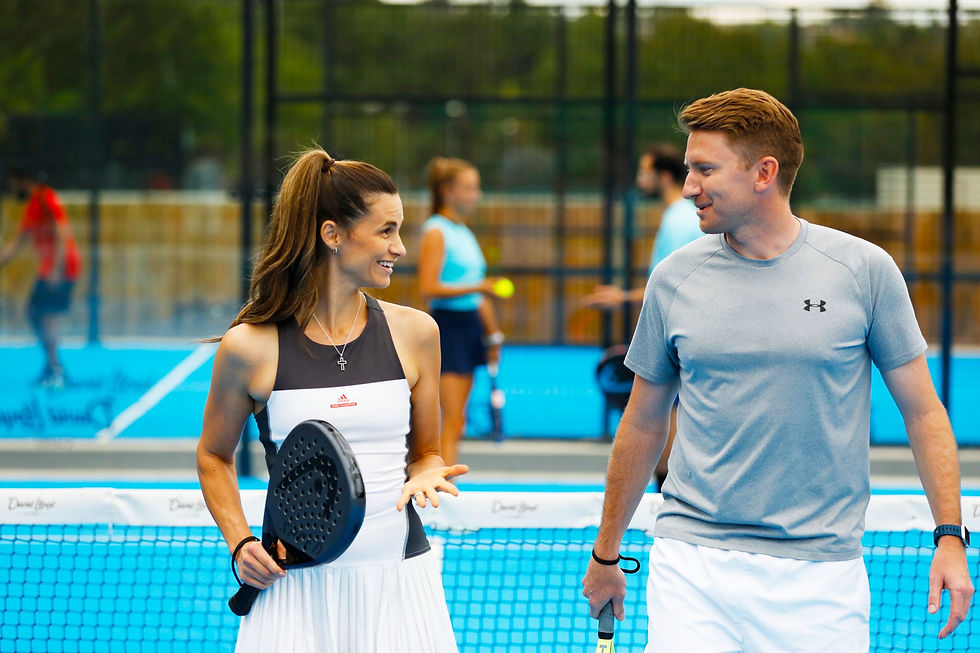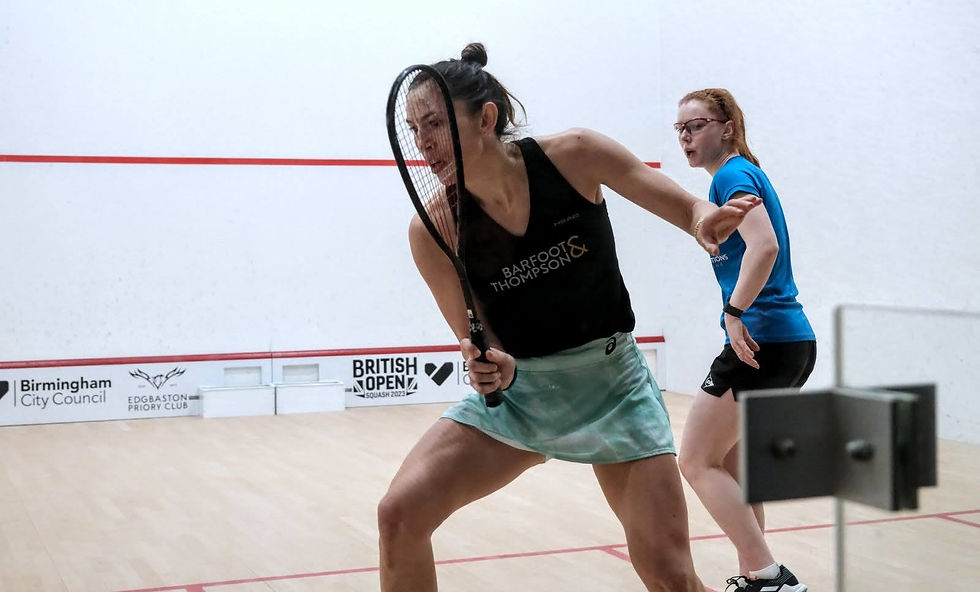Understanding Player Types: Selecting the Ideal Racquet Sport for Your Venue
- Markus Gaebel
- Feb 3
- 5 min read
In 2024, we’re seeing a wave of fresh energy sweeping across racquet sports. While the industry thrives, players’ motivations aren’t what they were two decades ago. The days of simply constructing courts and waiting for players to appear are over. Without a clear strategy on which racquet sport—or combination of racquet sports—is the best fit, many facilities struggle to attract and retain players.
For investors looking to integrate racquet sports into their facilities, the question is no longer just about which sport is “better,” but about understanding the types of players each sport attracts and how they fit into a facility’s business model. Every racquet sport has distinct characteristics that shape the player experience in different ways. Some emphasize fitness and endurance, while others cater to social engagement or technical mastery. The key is recognizing these differences and aligning them with business goals to maximize court utilization and long-term revenue.
Padel: The Social Starter
Padel is perfect for those who value camaraderie and accessibility. Played in doubles, it naturally fosters social interaction and teamwork, making it a sport where fun often outweighs competition. The compact court with surrounding walls creates dynamic rallies, and the small, stringless rackets make it easy to pick up, even for beginners. The learning curve is much flatter than in other racquet sports, allowing new players to enjoy the game almost immediately, which is a major factor behind padel’s rapid rise.

The sport has gained a strong foothold in urban areas, particularly among adults aged 18 to 45 who are looking for a recreational yet engaging activity. In Europe, nearly half of all padel players are women, making it one of the most gender-balanced racquet sports. The sport's accessibility and social nature make it an attractive investment for facilities aiming for high court turnover and a strong club culture that keeps players returning.
Padel is ideal for socializers, beginners, and city dwellers craving an accessible, fast-paced sport that combines fun and fitness in an inclusive environment.
Badminton: The Speed Demon
With shuttlecocks reaching speeds up to 400 km/h, badminton is the fastest racquet sport in the world, demanding lightning-fast reflexes, agility, and endurance. Players thrive on quick decision-making, sharp footwork, and explosive movements, making the sport particularly appealing to those who enjoy high-speed action under intense pressure. The compact court and rapid exchanges keep players engaged both physically and mentally throughout the game.
Badminton enjoys widespread popularity across Asia and Europe and appeals to a broad age range, from school children to seniors. It is a staple in many school sports programs, introducing young players early and providing a steady pipeline of talent. At the elite level, top players often reach their peak in their teens and twenties, highlighting the physically demanding nature of the sport. The gender split in badminton is one of the most balanced in professional racquet sports, with women making up approximately 45% of Olympic-level competitors.
Its presence in educational settings, combined with a competitive professional scene, makes badminton a strategic addition for multi-sport facilities looking to attract younger and highly engaged players. It is best suited for competitive athletes, school and college players, and speed enthusiasts looking for an intense yet accessible sport.
Squash: The Fitness Fanatic
Squash is widely recognized as one of the most physically demanding sports, offering an intense, full-body workout that burns between 600 and 1,000 calories per hour. The constant movement, rapid direction changes, and strategic shot placement make it a sport that appeals to those seeking both a physical and mental challenge. Often described as a physical version of chess, squash requires not only endurance but also tactical intelligence, as players use walls to create deceptive angles and outmaneuver opponents.

The sport attracts a dedicated player base, with many remaining committed to the game for life. The predominant age demographic is between 25 and 50, though masters tournaments for players over 50 are gaining popularity. Squash players also tend to come from higher-income and highly educated backgrounds, making them a prime target for premium membership models in urban squash clubs. With 70% of professional squash players having trained in academies from an early age, the sport has a structured development pathway that ensures a steady influx of high-level talent.
Squash is best suited for urban professionals, fitness addicts, and competitive players who thrive on both physical endurance and strategic depth.
Tennis: The Technical Traditionalist
Tennis rewards patience, strategy, and technical mastery, making it a sport that attracts players who enjoy long-term skill development. The large court and emphasis on powerful, well-placed shots require a combination of precision, endurance, and tactical awareness. The sport has one of the broadest age ranges of participation, with strong engagement across all generations. Around 40% of players are over 35, making tennis a lifelong pursuit for many enthusiasts.
The gender balance in tennis is nearly equal, with 52% male and 48% female participation. At the junior level, the sport is structured around club systems and competitive pathways, with over 10 million under-18 players globally. While casual play has been made more accessible, dedicated players often view tennis as a long-term commitment, continually refining their technique over years.
Facilities catering to tennis players need to consider longer court turnover times but benefit from high levels of player loyalty and ongoing coaching opportunities. Tennis is best suited for lifelong learners, families, and purists who appreciate the sport's blend of tradition and technical complexity.
Pickleball: The Casual Collaborator
Pickleball is North America’s fastest-growing racquet sport, particularly among older adults and multi-generational families. The game combines elements of tennis, badminton, and table tennis, featuring a smaller court, a perforated plastic ball, and underhand serves. The design of the game naturally encourages longer rallies, creating a more social and engaging experience for players.

The sport has an especially strong appeal among players over 50, who make up the majority of its participants. Around 52% of players fall into this age category, and the sport has become a staple in retirement communities, with 75% of such communities in the U.S. now including pickleball courts. Despite its lower intensity compared to other racquet sports, pickleball still provides a competitive edge and a strong social component, making it an attractive investment for facilities targeting older and more recreational players.
Pickleball is best suited for retirees, multi-generational families, and people seeking a low-impact yet engaging way to stay active.
Making the Right Choice which type of Racquet Sports suits best
Rather than viewing racquet sports as competitors, investors should consider how each sport fits within their facility’s vision. A multi-sport approach can enhance engagement, increasing court usage throughout the day by catering to different player segments. The choice depends on location, target demographics, and business goals—whether maximizing court capacity, fostering community engagement, or appealing to high-value club members.
At SFN, we provide insights and data-driven recommendations to help investors navigate these decisions. Whether you're expanding an existing facility or launching a new racquet sports venture, understanding player behavior is the key to long-term success.

Ready to play on the move? Get the https://most-playbd.com/app/ now and experience seamless mobile gaming at your fingertips. Whether you're at home, commuting, or taking a break, this app ensures uninterrupted fun with a vast selection of games and exciting promotions. Don't wait—download the app today and keep the action going 24/7!